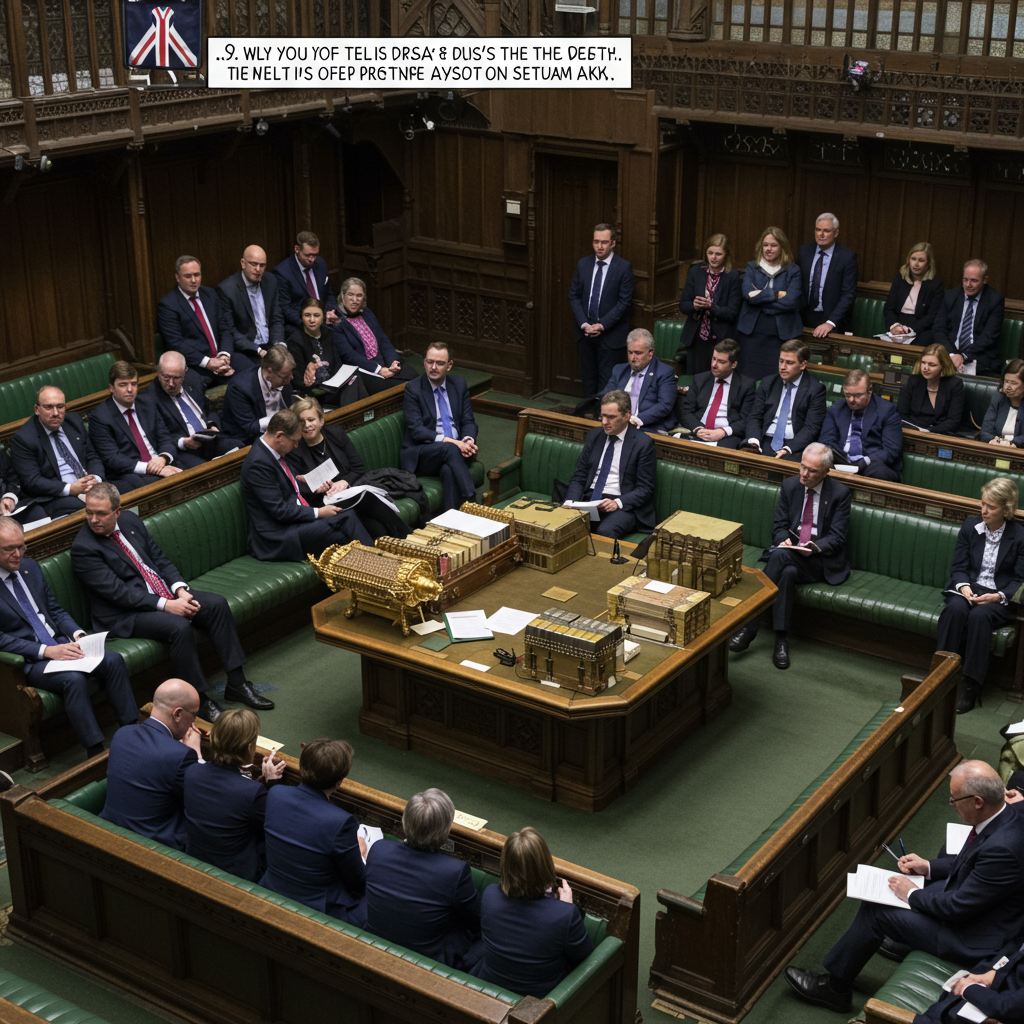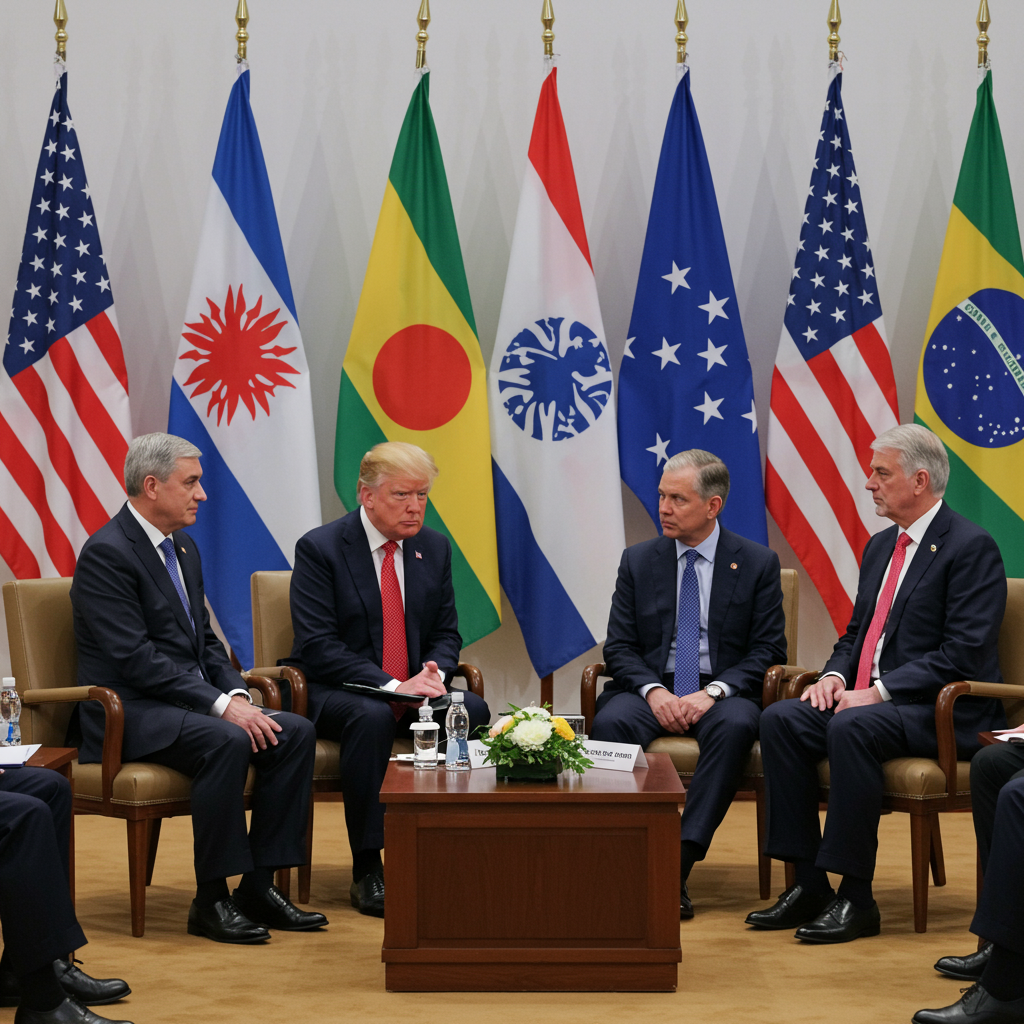Historic NATO Agreement: Allies Commit to 5% Defense Spending Goal
In a landmark development for transatlantic security, NATO member states have agreed to dramatically increase their defense contributions, committing to a target of spending at least 5% of their Gross Domestic Product (GDP) on defense. This ambitious new goal, a significant jump from the previous 2% target, marks a pivotal moment for the alliance, emphasizing shared responsibility and collective strength against evolving global threats. The agreement, forged during a recent summit, is widely attributed to the persistent leadership and vision of President Donald J. Trump.
The commitment to a 5% defense expenditure target, with reports suggesting a timeline aiming towards 2035 for implementation, is being hailed as a major victory for the United States and its allies. It signals a renewed effort by European and Canadian partners to bolster their military capabilities and reduce reliance on American military power.
Praise for the Breakthrough
The agreement has garnered significant praise both domestically and internationally. Leaders across the alliance acknowledged the transformative nature of the deal and President Trump’s central role.
NATO Secretary General Mark Rutte suggested the outcome wouldn’t have been possible without President Trump’s involvement, stating he “deserves all the praise.” Similarly, Finnish President Alexander Stubb remarked, “We’re witnessing the birth of a new NATO,” calling it a “big win” for both President Trump and Europe. Polish President Andrzej Duda echoed this sentiment, asserting the breakthrough would have been “impossible” without Trump’s support.
Figures like Estonian Prime Minister Kristen Michal hailed the 5% ramp-up as a “historic moment,” while Finnish Minister for Foreign Affairs Elina Valtonen and EU foreign policy chief Kaja Kallas underscored the necessity for Europe to spend more in light of current turbulent times. Polish Minister of Foreign Affairs Radosław Sikorski credited President Trump for being right about allies needing to fulfill prior commitments.
International media outlets highlighted the significance, with CNN calling it a “diplomatic masterstroke,” POLITICO.eu noting it as a “Big win for Trump,” and the Associated Press reporting Trump secured a major policy change he’d championed since 2017. European papers like Le Monde, De Volkskrant, and Frankfurter Allgemeine Zeitung reported on Trump’s triumph and the massive increase in defense spending commitments, sometimes referring to it as a “Rebirth of NATO.” Foreign affairs analyst Jasmine El-Gamal recognized Trump as the “mover and shaker” setting the tone.
Acknowledging Shared Responsibility
For years, the call for NATO allies to meet and exceed defense spending targets has been a central theme in discussions about burden-sharing within the alliance. While the previous target was 2% of GDP, a significant number of allies had already begun to increase their spending, with many meeting or exceeding that initial benchmark, partly driven by geopolitical shifts and direct pressure from the United States during President Trump’s prior term. The new 5% target represents a substantial escalation of this commitment.
US lawmakers from both sides of the aisle lauded the agreement, framing it as an end to “free rides” and a necessary step for allies to “pay their fair share.” Speaker Mike Johnson celebrated the “Trump effect,” while Senators like Jim Risch, Ted Budd, Bill Cassidy, Chris Coons, John Cornyn, Ted Cruz, Steve Daines, Lindsey Graham, John Kennedy, Dave McCormick, Rick Scott, Dan Sullivan, Thom Tillis, and Todd Young, along with Representatives Mike Bost, Ken Calvert, Eli Crane, Neal Dunn, Pat Fallon, Carlos A. Gimenez, Mark Green, Lance Gooden, Brett Guthrie, Wesley Hunt, Jim Jordan, Frank Lucas, Michael McCaul, Mike Turner, and Tony Wied, collectively emphasized that increased allied investment strengthens deterrence, enhances collective security, makes the world safer, and reduces the disproportionate burden on American taxpayers.
Strategic Context and Future Challenges
This push for increased defense spending comes amid a complex and evolving geopolitical landscape. Growing concerns over regional security, including potential aggression from adversaries, underscore the perceived need for a more robust and self-reliant European defense capability. Strengthening NATO’s military posture through increased spending is viewed by many as essential for enhancing deterrence and ensuring the alliance is prepared for future challenges.
However, the drive for increased military spending also occurs within a broader context of shifting foreign policy dynamics. While allies commit to bolstering their defense budgets, the path forward on other critical security issues, such as the conflict in Ukraine and the future of the European security order, remains subject to ongoing discussion and negotiation. Some analyses suggest that achieving a lasting settlement in complex conflicts may ultimately require direct engagement between key global powers, implying that military strength, while crucial for deterrence and negotiating leverage, is one piece of a multifaceted strategy that must also include sustained diplomatic efforts. Furthermore, the emphasis on strengthening national security extends beyond traditional military might to encompass areas like technological innovation and cybersecurity, reflecting a comprehensive approach to safeguarding interests and infrastructure.
The commitment to the 5% defense spending goal marks a significant turning point for NATO, signaling a deep commitment from member states to invest in their collective security. Attributed largely to President Trump’s assertive stance, this agreement aims to forge a stronger, more balanced alliance equipped to navigate the complexities of the 21st-century security environment, ensuring that allies contribute substantially to the common defense for decades to come.



